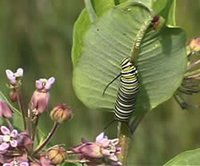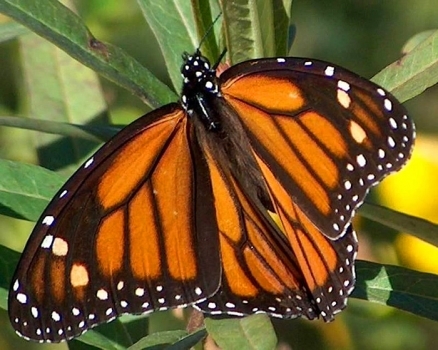Monarch butterfly
Monarchs can travel between 50-100 miles a day; it can take up to two months to complete their journey. The farthest ranging monarch butterfly recorded traveled 265 miles in one day.
Monarch Butterfly (Danaus plexippus)
The monarch butterfly (Danaus plexippus) is among the most recognized, studied, and loved of all of North America’s insects. Children study monarchs in school. Researchers and citizen scientists track their migration and breeding. Conservationists and government agencies are concerned about threats to breeding, migration, and wintering habitats
The monarch butterfly life cycle, like other insects, has several life forms and stages prior to reaching adulthood. The monarch has four distinct life stages: egg, larva (caterpillar), pupa (chrysalis), and adult. Milkweed and flowering plants are needed for monarch habitat. Adult monarchs feed on the nectar of many flowers, but they must have milkweed to breed and develop into a butterfly.
 Monarch caterpillar on milkweed. (Source: USFS; Credit: Dick Walton, Monarch Monitoring Project)
Monarch caterpillar on milkweed. (Source: USFS; Credit: Dick Walton, Monarch Monitoring Project) Awareness of the monarch butterfly’s life cycle and habitat requirements is essential for their survival and an important step in the conservation of this animal. Many government agencies, organizations, and individuals across North America are working on projects to conserve monarch habitats and their migration. Citizen scientists from across the United States and Canada volunteer to help collect long-term data on larval monarch populations and milkweed habitat.
Reference
- U.S. Forest Service — The Migratory Monarch: Monarch Butterfly (Danaus plexippus)
Further Reading
- The Monarch Butterfly in North America
- Wings Across the Americas, Monarch Butterfly Program - U.S. Forest Service International Programs
